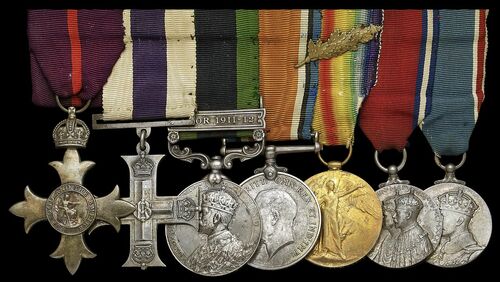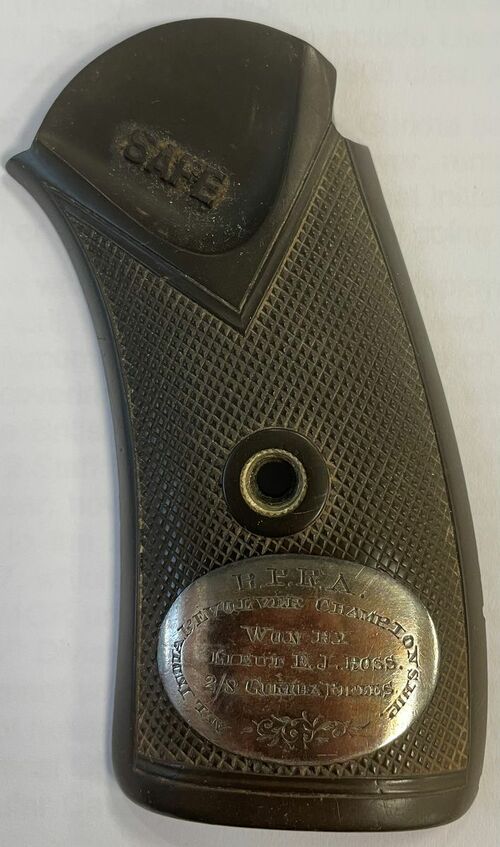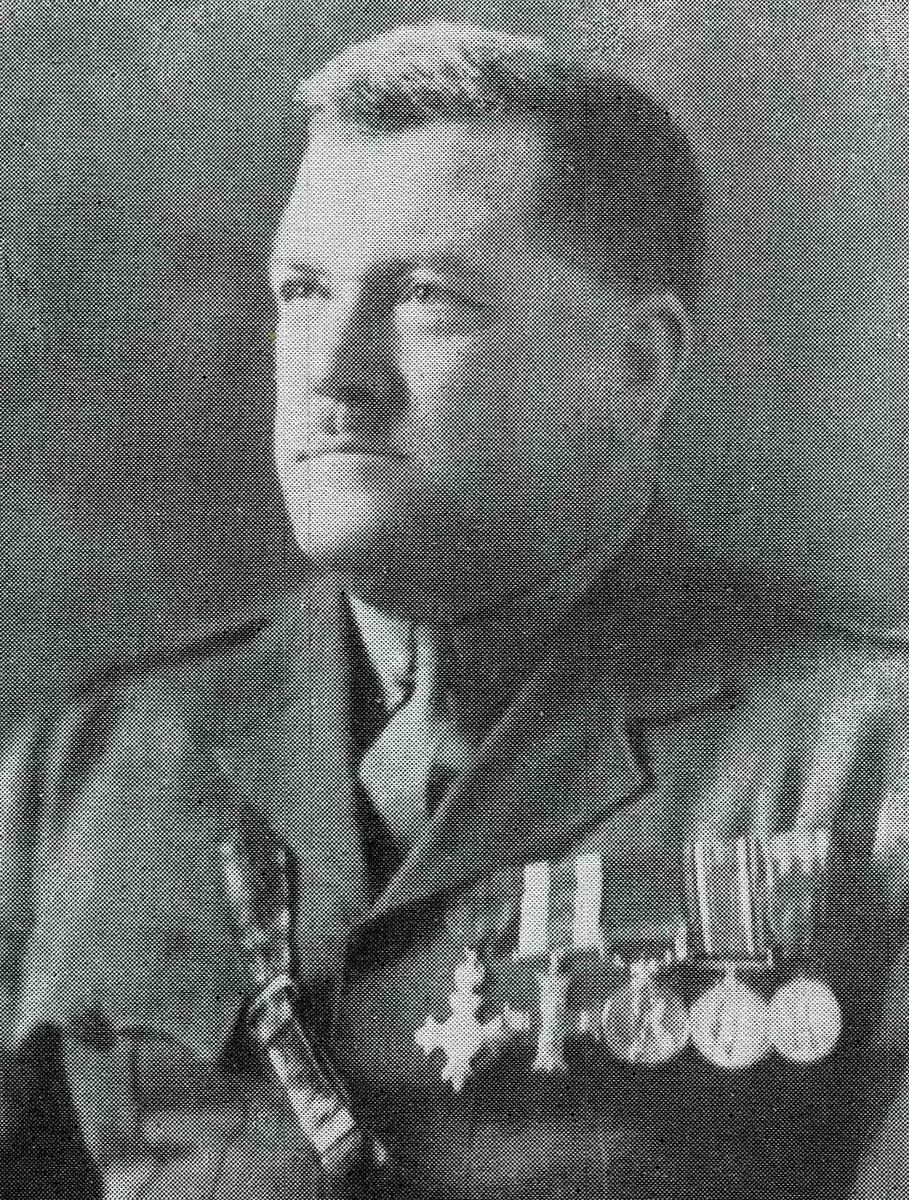Auction: 23003 - Orders, Decorations and Medals
Lot: 253
A very fine O.B.E., M.C. group of seven awarded to Brigadier E. J. Ross, 2nd King Edward's Own Gurkha Rifles (The Sirmoor Rifles), an A.D.C. to King George VI who was also a Scottish Rugby International and took the Indian Army Revolver Championship in 1908
The Most Excellent Order of the British Empire, Military Division (O.B.E.), Officer's breast Badge, silver-gilt, hallmarks for London 1918; Military Cross, G.V.R.; India General Service 1908-35, 1 clasp, Abor 1911-12 (Lieut. E. F. Ross. 2/8th Gurkha Rfls.); British War and Victory Medals, with M.I.D. oak leaves (Capt. E. J. Ross.); Jubilee 1935; Coronation 1937, mounted as worn, very fine (7)
O.B.E. London Gazette 9 June 1926.
M.C. London Gazette 3 June 1918.
Edward Johnson Ross - or 'Teddy' to his friends and comrades - commanded the 1st Battalion, 2nd King Edward's Own Gurkha Rifles (The Sirmoor Rifles) (1/2GR) from 1929-33 and the Zhob (Independent) Brigade in Baluchistan from 1936-40.
Born on 2 March 1884, he was educated at Fettes College, Edinburgh and admitted as a Gentleman Cadet to the Royal Military College, Sandhurst in September 1902. He played rugby both for Sandhurst and Scotland, but was forbidden to play for Scotland if it clashed with College matches. On one occasion he feigned sick to avoid the annual match between Sandhurst and Woolwich, in order that he could play an international match with Scotland. On the following day his 'cover was blown' when the Press was full of praise for his magnificent performance for Scotland. This resulted in him being rusticated for one term. He received his sole official Scotland Cap for the Five Nations Match played on 6 February 1904 against Wales at Swansea.
Commissioned into the Indian Army on 9 January 1904, Ross was placed on the Unattached List Indian Army to the 2nd Battalion, Gordon Highlanders. He arrived in India on 18 March 1904, he was subsequently posted to the 38th Dogras on 24 March 1905. One year later, on 25 March 1906, he transferred to 7th Gurkha Rifles, which on 1st September 1907 was re-designated as the 2nd Battalion, 8th Gurkha Rifles (2/8GR) (formerly the 43rd Gurkha Rifles and one of the three Assam Regiments). In 1908, he was declared the Revolver Champion of the Indian Army. He was reputed to have been a fine shot and in later years presented a number of trophies to adorn the Officers' Mess of 2nd Gurkha Rifles in Dehra Dun. In 1911, the 1st Battalion, 8th Gurkha Rifles (1/8GR) was deployed on the Abor Expedition, reinforced by two companies from the 2nd Battalion including Ross (Medal & clasp).
On the outbreak of the Great War, 2/8GR was one of six Gurkha Battalions deployed to France as part of the India Corps. Ross, however, remained in India to command the Battalion Depot; all the other British officers that initially deployed with the 2nd Battalion were either killed or wounded within weeks of going into action so it could be considered a lucky escape.
Re-joined, he served with 2/8GR, which had re-deployed to Egypt from France, between February-April 1916, after which he moved to Mesopotamia where he joined 1/2GR as a reinforcement at the Advance Base on the River Tigris. At the time, the Battalion was recovering from its first encounter with Turkish forces as part of the effort to relieve the British and Indian defenders of Kut-el-Almara. In 1916, he was appointed a Grade 2 Staff Officer to Headquarters 14th Division serving in Mesopotamia. The following year, however, he assumed temporary command of 1/2GR before being transferred to the 2nd Battalion, 4th Gurkha Rifles (2/4GR) as Second-in-Command in May 1917, which was preparing to undergo operations north of Baghdad. He remained with 2/4GR until September 1917, before returning to his former Staff appointment with 14th Division. Between July-December 1918, he was assigned to Special Employment with the Political Department in South Persia, where, it was rumoured, he did not hesitate to use the gallows!
From January-May 1919, he was employed as a Political Officer in Kurdistan and recorded as being the Commander of the Kurdish Irregular Cavalry. For his services in Mesopotamia and Kurdistan, he was awarded the M.C. and a brace of 'mentions' (London Gazette 15 August 1917 & 21 February 1919, refers). Having been awarded his Great War Pair and despite being shown as being eligible for the the G.S.M. with clasp Kurdistan and Iraq in The Indian Army List, there is no existing record of these ever being promulgated.
He attended the Staff College at Quetta from1920-22 and thereafter was appointed Brigade Major to 6th (Kohat) Indian Infantry Brigade between 1922-25. He subsequently served on the Staff of Army Headquarters India 1925-26, for which he was awarded his second decoration, after which he was posted to 1/2GR as Second-in-Command in 1926. He commanded 1/2GR, stationed in Dehra Dun, from February 1929 to February 1933, which included a tour on the Khyber and Landi Kotal. On relinquishing command he was appointed Assistant Adjutant-General, Army Headquarters India in the rank of Colonel. From 1936-40, he commanded, as a temporary Brigadier, the Zhob (Independent) Brigade in Baluchistan, which included for a time his former Battalion, 1/2GR, stationed at Fort Sandeman. He was appointed A.D.C. to King George VI on 18 June 1938, which he held until his retirement as an Honorary Brigadier on 1 April 1940.
The Brigadier retired to British Colombia, Canada and for a time served on the Staff of the Pacific Command at Esquimalt, doing much in preparing the defences along the British Columbia coastline. He helped to form the Pacific Coast Militia Rangers before ill health forced him to retire, before his death on 23 June 1943. He was buried with full military honours by the 17th Company, Pacific Coast Militia Rangers at St Peter's Church, Duncan on 26 June 1943; sold together with pistol stock with engraved silver plate upon his Indian Championship win and file of copied research.
For his miniature dress medals, please see Lot 329.
Subject to 20% VAT on Buyer’s Premium. For more information please view Terms and Conditions for Buyers.
Sold for
£2,000
Starting price
£1100









